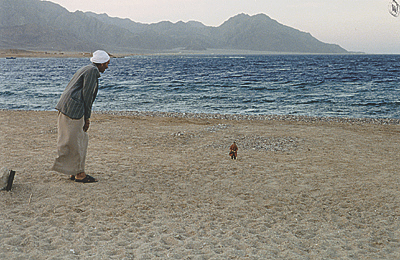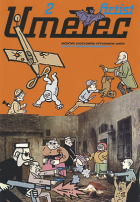|
In 1994, over 10,000 people gathered in New York to celebrate GI Joe, the toy cowboy. His unofficial web pages amount to hundreds, according to the Village Voice, and new remake of the original Joe was just recently launched. Charlie Citron, one of the boys who used to play with the toy soldier back in the sixties, came across his old buddy when going through his closet. He took the toy along with him to Europe, and started to show him what the world was like. The cowboy in hand-made clothes travels to the South of United States, Israel, Scandinavia, the Baltics, Poland, Amsterdam, Morocco and is ready to discover other new territories with Charlie. He finds himself in various situations, attracting attention of passers-by. He stands still, sits on a horse, or is just leaning against a wall. Charlie makes a record of these situations on his camera using focus zoomed to human proportions. Joe is Charlie´s alter ego who likes traveling very far if possible, intervenes with the environment. His still smile is covering up his sense for absurdity. Joe is half voodoo, half zombie, a bit of Lemonade Joe, Old Shatterhand, Michael Jackson and Charlie Bronson. In any case, he is an object which always attracts attention and provides topic for a chat. This is probably the essence which stays out of the frame of the photographs and which matters to Citron the most - to strike up a conversation, to listen, to tell a story, to laugh and threaten at the same time. Kids get it first. Joe sits next to Charlie making expressionless faces.
(pages 14 through 15)
Recommended articles

|
|
There is nothing that has not already been done in culture, squeezed or pulled inside out, blown to dust. Classical culture today is made by scum. Those working in the fine arts who make paintings are called artists. Otherwise in the backwaters and marshlands the rest of the artists are lost in search of new and ever surprising methods. They must be earthbound, casual, political, managerial,…
|

|
|
Nick Land was a British philosopher but is no longer, though he is not dead. The almost neurotic fervor with which he scratched at the scars of reality has seduced more than a few promising academics onto the path of art that offends in its originality. The texts that he has left behind are reliably revolting and boring, and impel us to castrate their categorization as “mere” literature.
|

|
|
Goff & Rosenthal gallery, Berlin, November 18 - December 30, 2006
Society permanently renegotiates the definition of drugs and our relationship towards them. In his forty-five minute found-footage film The Conquest of Happiness, produced in 2005, Oliver Pietsch, a Berlin-based video artist, demonstrates which drugs society can accommodate, which it cannot, and how the story of the drugs can be…
|

|
|
Borrowing heavily from fairy tales, fables and science fiction, the art of Magda Tóthová revolves around modern utopias and social models and their failures. Her works address personal and social issues, both the private and the political. The stylistic device of personification is central to the social criticism emblematic of her work and to the negotiation of concepts used to construct norms.…
|
|









Comments
There are currently no comments.Add new comment